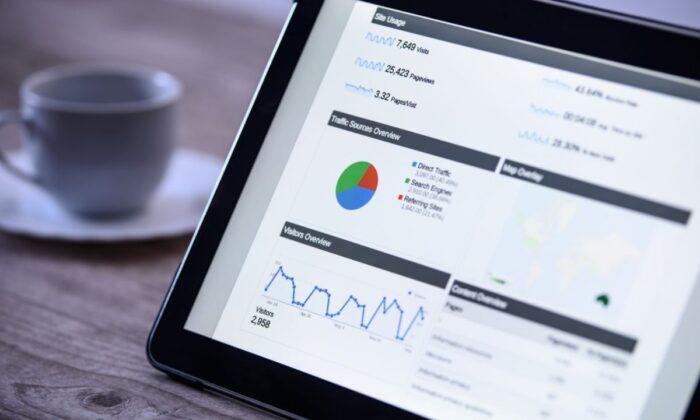 By Frank Wazeter
By Frank Wazeter
Fundamentally a website is your most powerful tool because it’s capable of evolving as your business grows and because it’s a tireless worker. Nobody on the planet can work harder than a website because a website is available 365 days a year, 24/7. It doesn’t need to sleep, never gets sick, and won’t burn out or require time off.Yet, the website is the biggest missed opportunity for most businesses because the vast majority of the time they simply don’t work. When someone says their website “doesn’t do anything,” it pretty much comes down to one thing: sales.
Imagine this scenario: You’re trying to talk to a salesperson, except this particular person only awkwardly stares at you. Whenever you try to ask a question, you only get a robotic response repeating the same couple of sentences with extremely vague information and a list of words. You don’t need to be an oracle to predict the future on this one: Nobody in their right mind is buying from this person.
Communication is the most basic requirement for a sale to happen. Your website is a tool to communicate digitally. Most sites communicate like a creepy salesperson who can only repeat the same vague information. Fundamentally, it’s why the vast majority of businesses have websites that fail.
Most businesses don’t know what to focus on, so they spend money in random directions hoping that it’ll “fix the website.” Would 10,000 more people talking to the creepy salesperson eventually result in a sale? They’d probably get a couple, but with a terrible close ratio and an expensive cost to get that many people in front of them.
Understand That Your Website Is Never Finished
Websites have infinite possibilities for what they can do. The problem with that is that most of the time people try to over-complicate and overthink their websites from the get-go. They’ll look at other competitors’ websites, assume it’s working for them, and want to copy or duplicate everything going on. This leads to people agonizing over small details, oftentimes for months on end, because the assumption is that “once it’s done, it’s done.”Don’t put that much pressure on yourself. Rather than thinking of a website as “done”, think of it as a perpetual work in progress that grows and evolves with you and your business. No design is perfect and there will always be flaws. Stop striving for perfection and instead adopt a mindset of testing and improving.
Related: 3 Reasons Your Website Will Never Be Finished
Website Design and Content Is How a Website Communicates
Most websites over-complicate design, which makes communication ineffective and development costly and time-consuming. Start very simple. The core web pages you need are a very small set: home page, about page, product/services, and contact.Keep design clean and clear. Way too many websites add way too many things on a single page. It’s kind of like an empty countertop, begging to be filled with clutter. Think about this: Does a kitchen full of stacked old dishes or a clean countertop look more appealing to a guest?
Simpler designs also make your content creation needs easier to digest and tackle. Remember, the website is always a work in progress and you can always add more pages.
Even in today’s media-rich world, writing is the primary way people consume content online. Writing is how your website “talks” to a customer. Bland and generic content makes your customers think you’re also bland and generic.
Here’s an example: Rather than listing services and products with industry verbiage that your average customer doesn’t understand, illustrate the problems you solve and the process you implement.
Related: How to Make Your Website Your Best Salesperson, and Not Your Worst Money Pit
You Must Use Analytics and Know These Two Core Stats
Websites are ever-evolving and constantly changing. Once we’ve got our design out there, we need to see how effective the communication really is. The only way we do this is by knowing what our visitors are doing when they get to the website.There are plenty of free analytics tools available, with Google Analytics being the most popular. While there are tons of useful stats, the vast majority of our analysis comes down to two: average time on page (also called average engagement time) and users.
When we’re looking at how to improve a website, the vast majority of the decisions are based on those two stats. Fortunately, you don’t need to be a tech wiz to know them. If you can log into analytics, they display a graph on the first page.
Average time on the page tells you how effective your website is at communicating. More time means you’re more effective. Situations vary, but generally, people spending less than 30 seconds means you really need to improve. People spending 1.5–2 minutes+ means you’re doing pretty good. If you don’t know these stats, you have no idea what the problem is with your website. Making random guesses at what you need to change just doesn’t often work out and it’s why the vast majority of businesses spend money on website improvements that don’t actually solve their problem.
For example, if you buy a service like ads, SEO, or leads and send them to your site, but people spend less than 10 seconds on the site, it doesn’t matter how much money you throw at those services (and in fact, more and more of SEO is based on how long people spend on your site).
The reverse is also true. If you spend money on a redesign, and people spend on average five minutes on the site but only have two people visiting the site, then the redesign won’t help you solve your problem. What you need is more people seeing your site.





